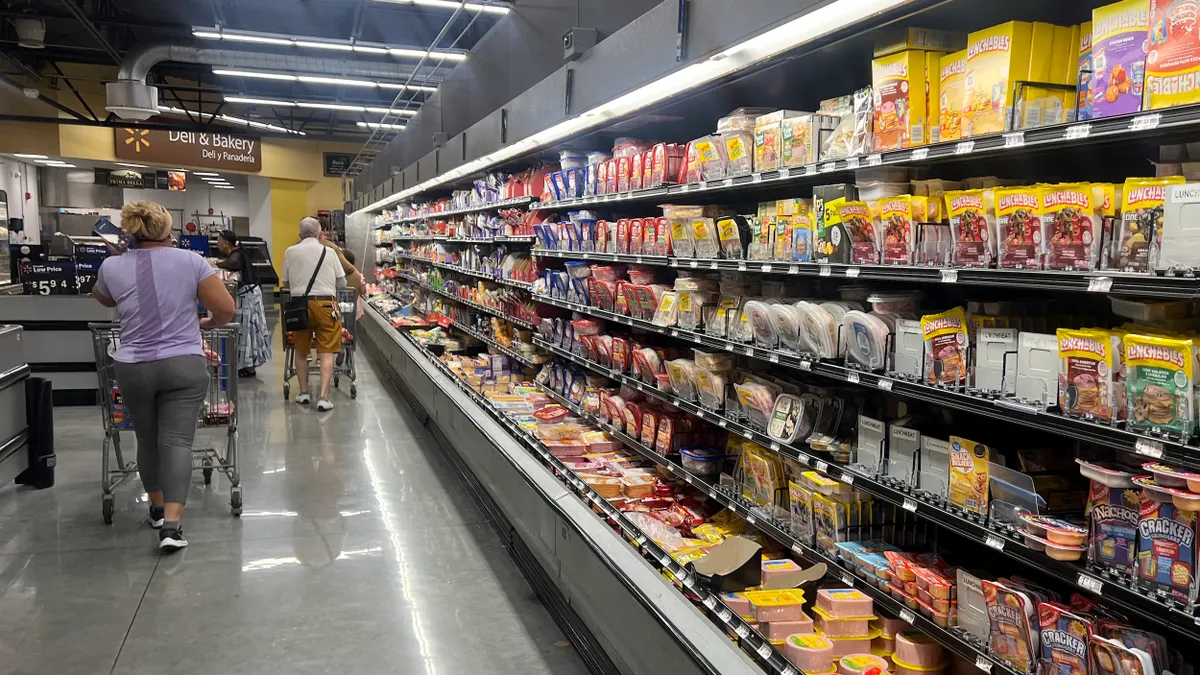Dive Brief:
- Amazon recently put out a press release to mark 10 years of its "Frustration-Free Packaging" system, "an invention designed to reduce waste and delight customers with easy-to-open, 100% recyclable packaging." The company estimates that between Frustration-Free packaging and "Ships in Own Container" items it has avoided 181,000 tons of packaging material and 307 million boxes.
- While Amazon describes this program as a way to eliminate the "wrap rage" associated with plastic packaging, some consumers are still upset. So far this month, at least two U.K. orders have gained widespread attention online for the excessive amount of packaging involved. One involved a wall calendar that was wrapped in 45 feet of paper, as reported by the Daily Mail. Another, a roll of bubble wrap swaddled in 100 feet of paper packed inside a box, was reported by Metro.co.uk.
- Conversely, customers have also accused Amazon of "ruining the holidays" by shipping gifts directly in the original packaging and spoiling the element of surprise. Refinery 29 recently compiled some of the latest social media responses that show sustainability may be less important than secrecy for certain shoppers.
Dive Insight:
Finding a balance on packaging that can adequately protect a product while minimizing waste isn't easy, and with the kind of volume Amazon is trafficking it's inevitable that customers on either end of the packaging spectrum will be dissatisfied. The company estimates it has sent 120 million shipments that were either frustration-free or shipped in their own container so far this year.
Like other major companies of its size, Amazon is also under additional scrutiny for its sustainability policy. A recent Greenpeace report called Amazon "one of the least transparent companies in the world in terms of its environmental performance," citing the company's opacity on greenhouse gas emissions and sourcing for recycled material.
This also translates into Amazon's massive use of paper and cardboard. While most people probably aren't seeing dozens of feet of paper in their boxes, even a small amount of excess material can add up quickly across millions of deliveries.
This "Amazon effect" has become a common term in the recycling industry in recent years, as the company's distinctive boxes can be spotted outside many buildings. Opinions differ on whether this has actually resulted in more cardboard packaging, or just diverted it from the back of retail stores to curbside carts, but it's clear that Amazon's role in the U.S. recycling stream is an increasingly large one. With the company's recent acquisition of Whole Foods, it will now play an even bigger role in the supply chain, for better or worse.
As online shopping sales also grow for overseas competitors such as Alibaba and JD.com, the world can expect to see demand for e-commerce cardboard increase, at least in the near future. The recent "Single's Day" shopping event — China's equivalent of Black Friday and Cyber Monday — generated an estimated 160,000 metric tons of packaging waste. Despite recent fluctuation in commodity prices for recycled cardboard, it remains in high demand. Like any material, reducing the amount needed in the first place and ensuring proper collection of what is used will still be an ongoing challenge.










